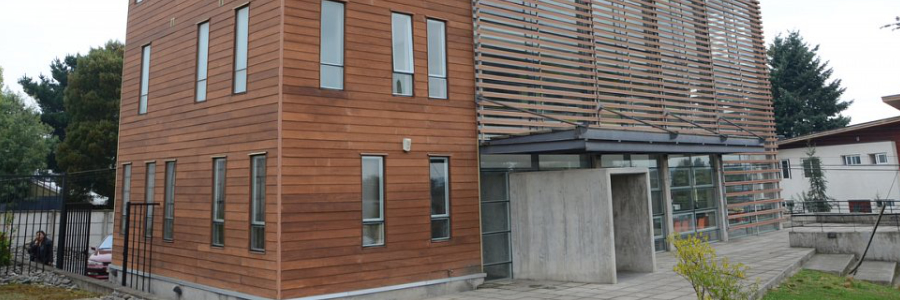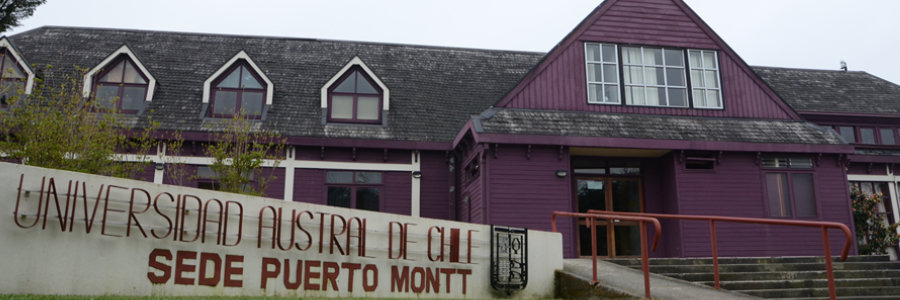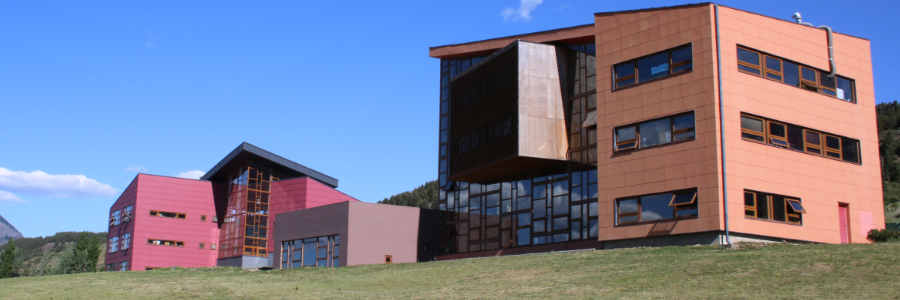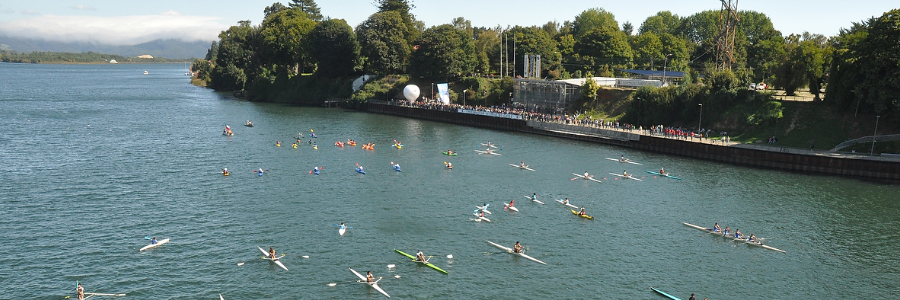The Isla Teja Campus, immersed in a lush natural setting, looks out over the grand watercourses that surround the city of Valdivia. Its extensive infrastructure merges modern buildings with traditional construction against a backdrop of abundant green areas, inviting reflection and study. These green areas are highlighted by the Botanical Garden, created in 1955, and a nature sanctuary and research area known as the Arboretum. The campus also includes modern services such as a bank, a health center, a post office, a cinema, a veterinary hospital, areas for sports and recreation, recycling facilities, and numerous dining halls and restaurants. Comprehensive educational activities, together with the 9 faculties that pursue their academic endeavors here, help create a multicultural and interdisciplinary environment and provide a spark for the weekly agenda of cultural events. This campus is an environment ripe for the development of innovative ideas that reach from southern Chile to the global sphere.
Campuses

The Miraflores Campus is the home of the Faculty of Engineering Sciences, which is unique in Chile for offering a Naval Engineering program, whose facilities include an exclusive hydrodynamic modeling channel and a modern multimedia laboratory.
The Faculty is also a pioneer in the training of professionals in sound engineering, including a program in civil acoustic engineering. In recent years, the Miraflores Campus has benefitted from significant investments in advanced infrastructure and the construction and renovation of laboratories, ensuring high-quality theoretical and practical learning in various disciplines. It houses 9 institutes that develop research in electronics, civil engineering, computer science, materials science, thermomechanics, acoustics, design, industrial engineering, and naval engineering. The campus premises extend along a large swathe of land from the banks of the Valdivia River, with an amazing view over its waters, to the highest part of the city.
On the way, it passes through a large, protected wetland, filling the air with the bird calls and passing mists that put the finishing touch on the unique Miraflores environment.

In October 2002, the creation of the Faculty of Medicine’s Clinical Campus was finalized in the city of Osorno, which is located 110 km (70 mi.) to the south of Valdivia. This event was the culmination of a process of exchange of more than 30 years between the Universidad Austral de Chile and the Osorno Municipal Health Services. The commencement of this historical agreement in the 1970s allowed for the presence of specialists in the fields of Pediatrics and Gynaecology and Obstetrics in the region.
Today, the Clinical Campus is fitted with excellent infrastructure and located in the proximity of one of the city’s main health care centers. It is endowed with well-equipped classrooms that allow a robust connection between students and professors and the real world of medical practice.

The Puerto Montt Campus of the Universidad Austral de Chile, located 220 km (135 mi.) to the south of Valdivia, makes significant contributions to southern Chile in terms of teaching, research, outreach and services. The strategically-located port city of Puerto Montt acts as the main link to Chilean Patagonia and the Chiloé Archipelago thanks to its international airport and its maritime zone.
This campus, founded in 1989, occupies the 7-hectare site of the former Pelluco Resort, which sits on the shores of the Reloncaví Sound. The academic and research installations look out over Puerto Montt’s charming bay.
UACh-Puerto Montt offers undergraduate programs in the areas of engineering, health, and pedagogy. Its programs are highlighted by research in aquaculture, psychology, computer science, basic sciences, speech therapy, and information technology and management, which have a wide-ranging positive impact on development in the region and in other zones including Patagonia and the Atacama. This campus also oversees four experimental stations for the development of aquaculture, located both locally and throughout Patagonia, and the campus itself is home to specialized aquaculture laboratories and the Regional Center for Analysis of Natural Resources and the Environment (CERAM), which is accredited as a location for studying the red tide phenomenon.
A key aspect of this campus is its link with the local community through initiatives such as the La Colina Health Center, a program run with the Municipality of Puerto Montt that offers medical aid approximately 7,000 people per year free of charge. Meanwhile, through UACh-Puerto Montt’s Musical and Choral Extension Service, university students and recognized artists from the south of Chile share music and song, broadening the cultural offerings of the region.

Located on the road to Coyhaique Alto and surrounded by great natural beauty, the Patagonia Campus has its origins in the university’s mission to deliver high-level tertiary education to the people of the southern and austral zones of the country.
Those who oversee the broad array of educational offerings at the Patagonia Campus are committed to contributing, with quality and efficiency, to the development and well-being of the Region of Aysén. Here, professionals and graduates are educated with a sense of ethics and social responsibility as they work in the diverse scientific, technological, humanistic, and social disciplines covered by the many degree programs offered on campus.
The Patagonia Campus is situated on a 5-hectare piece of land 4 km (2.5 mi.) from the center of Coyhaique. It is home to two modern buildings that hold laboratories, classrooms, a library, and administrative offices.

















